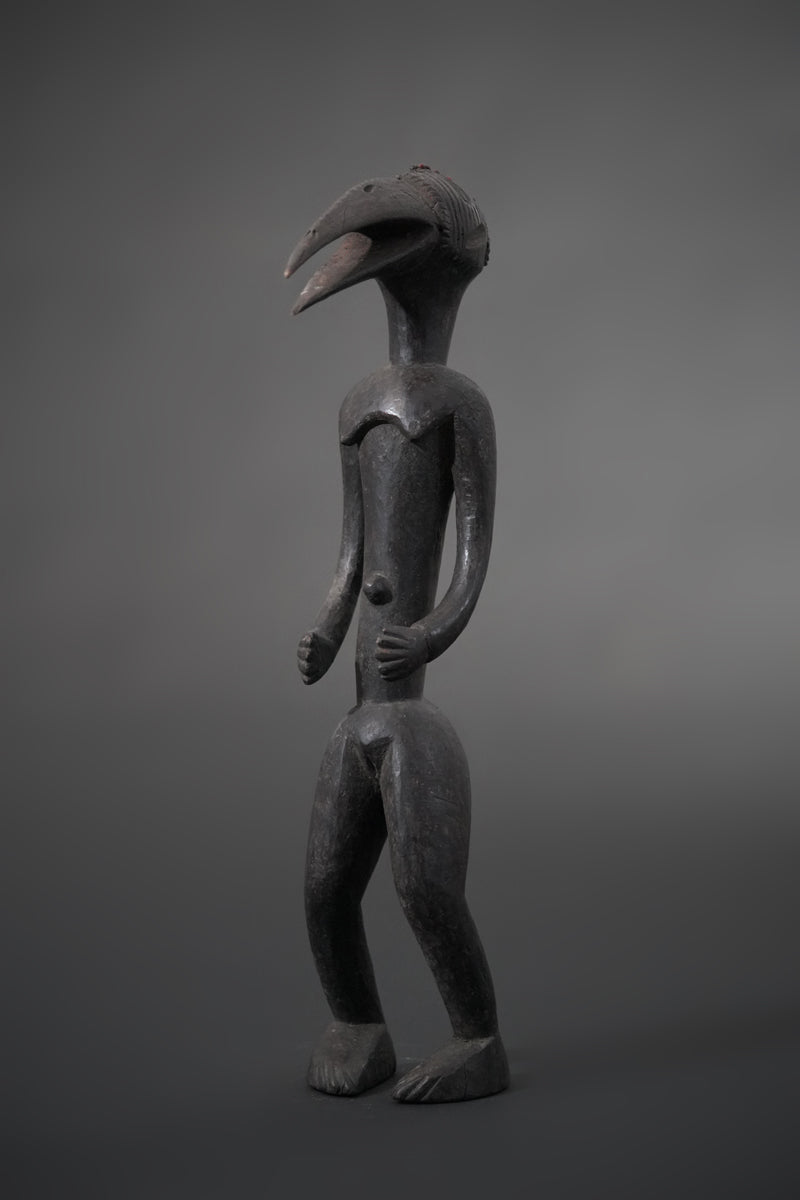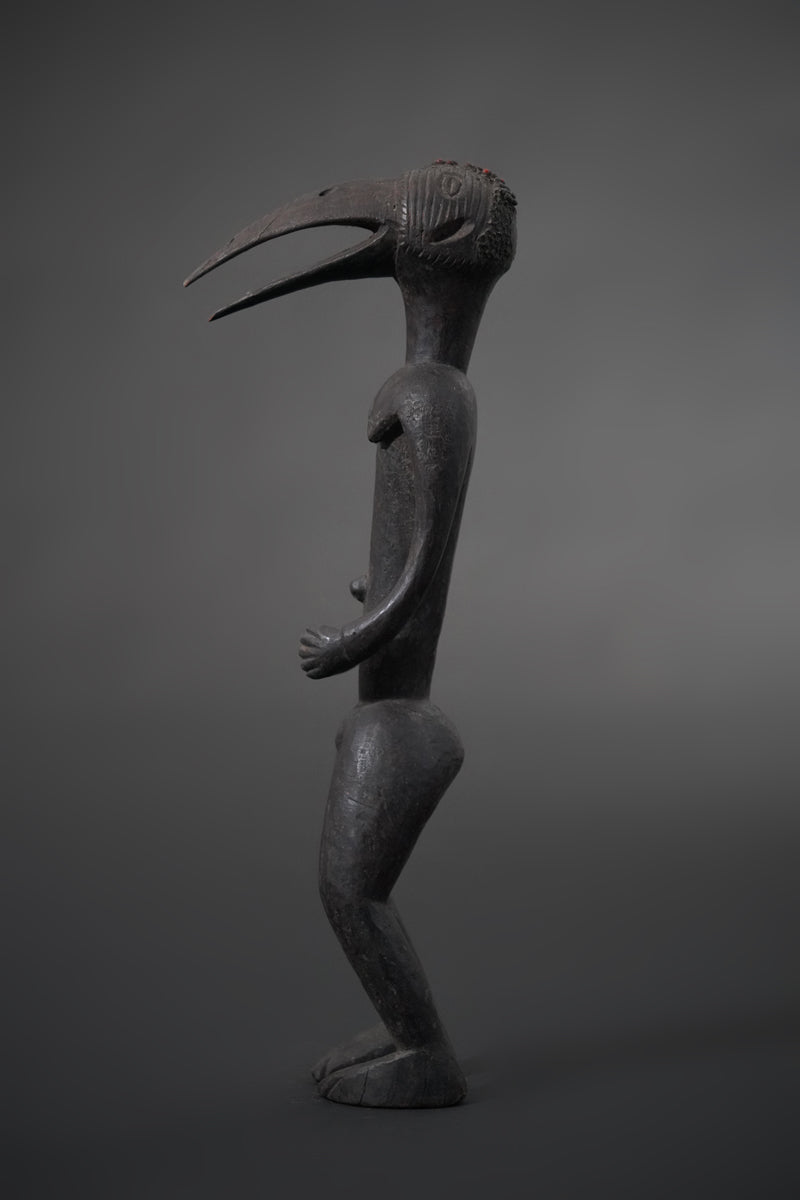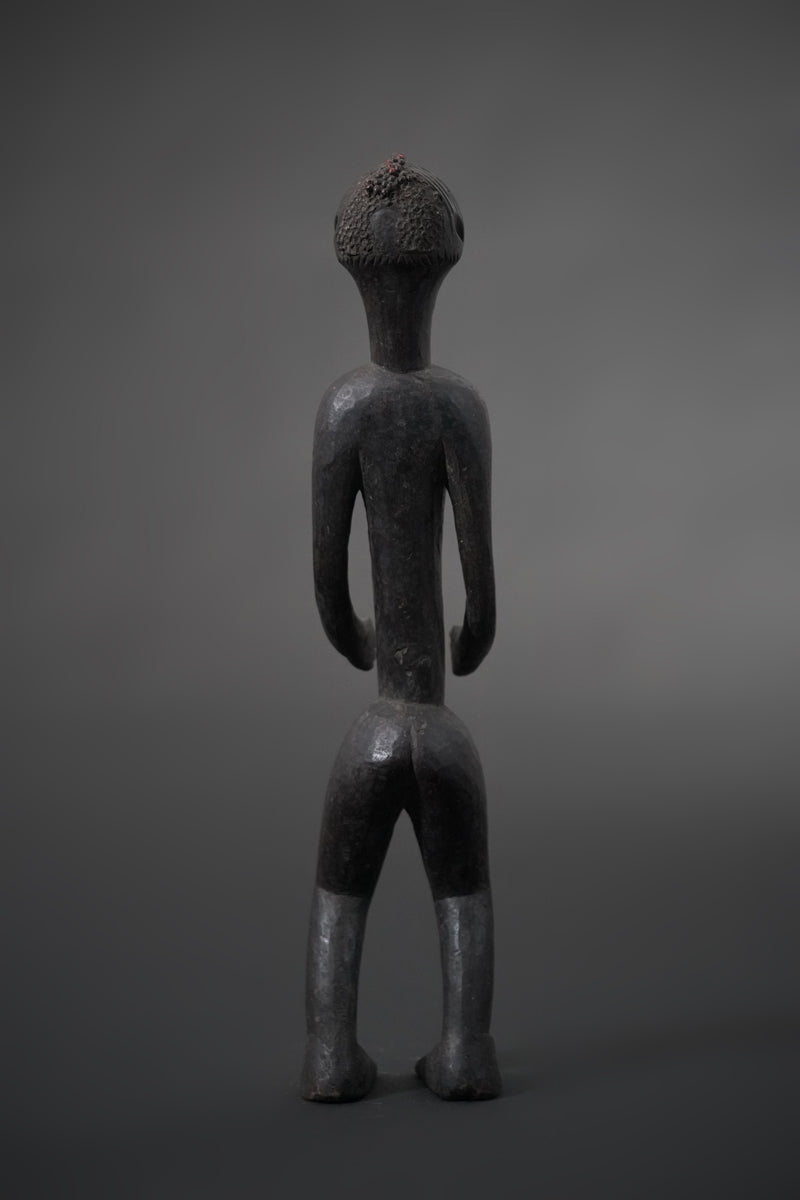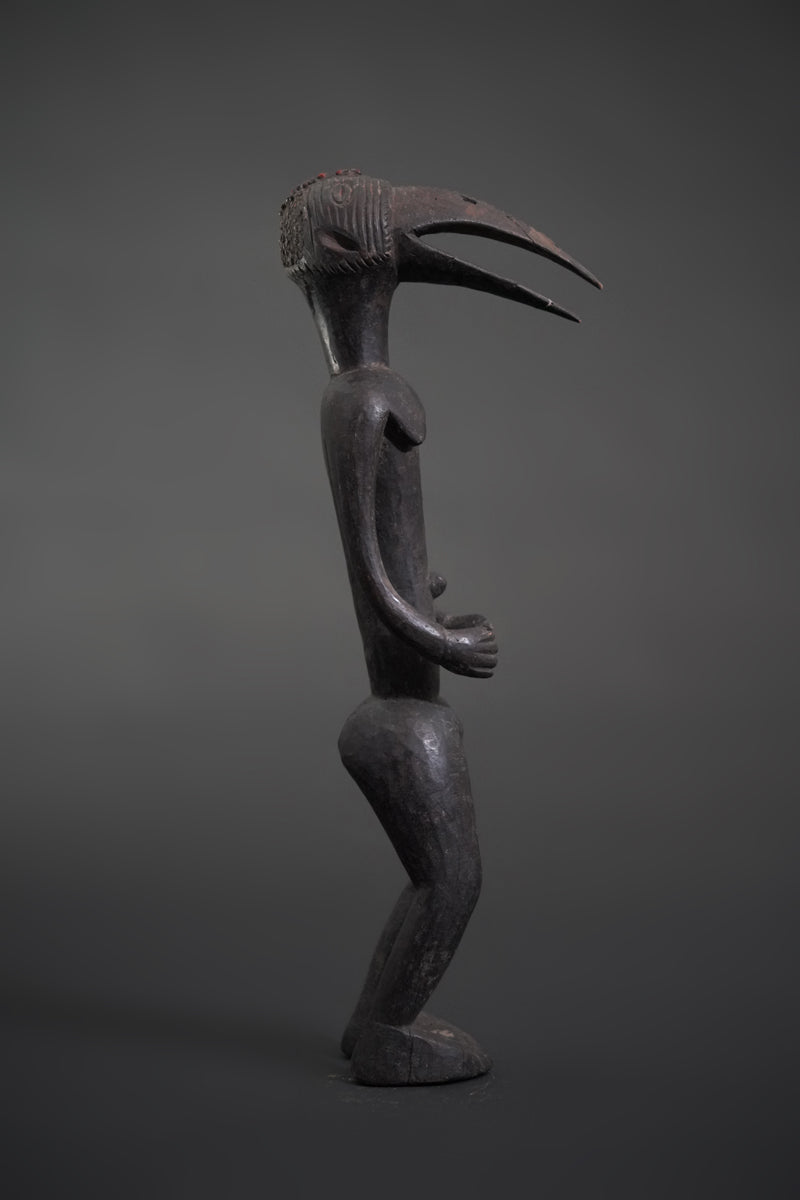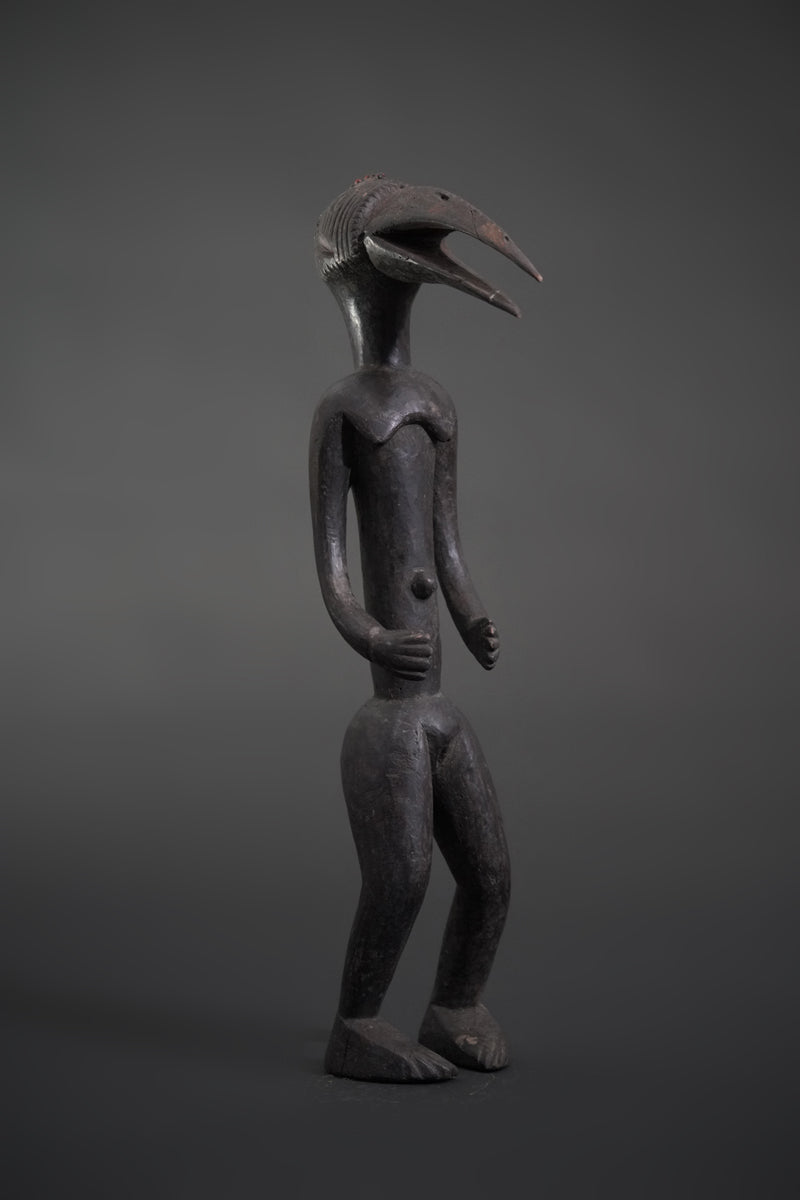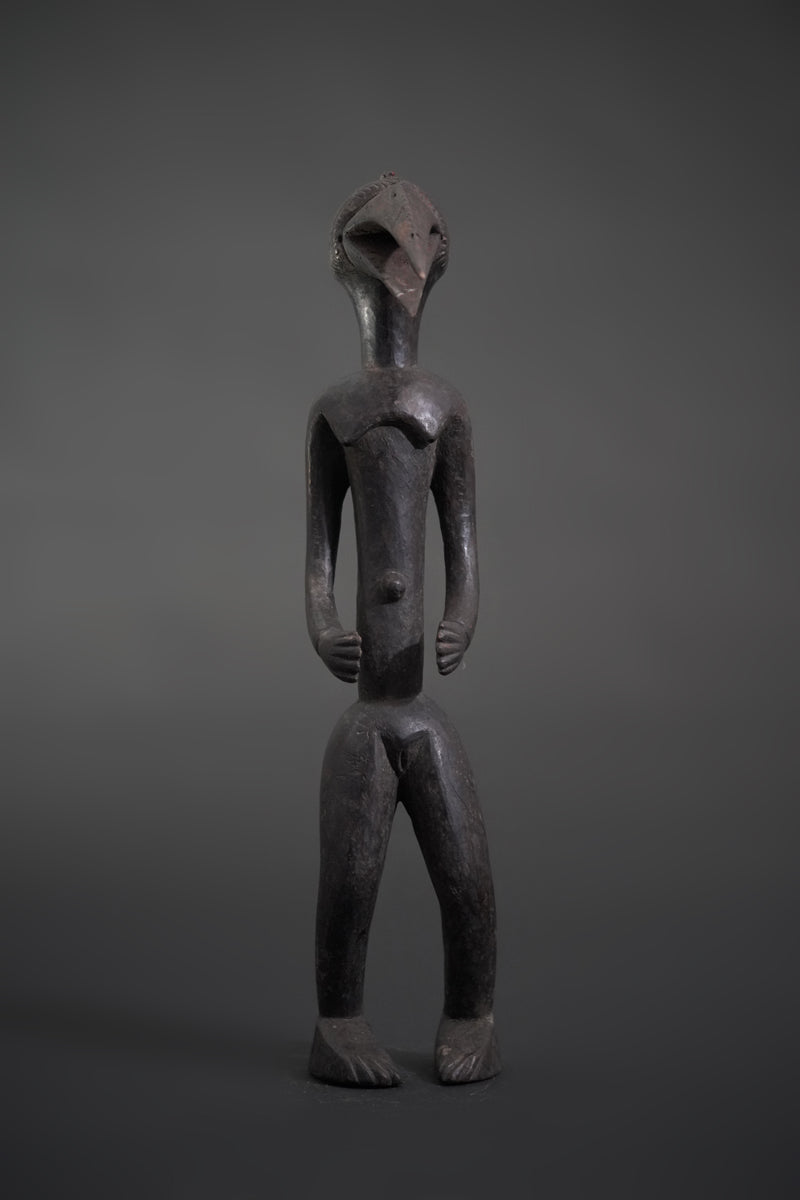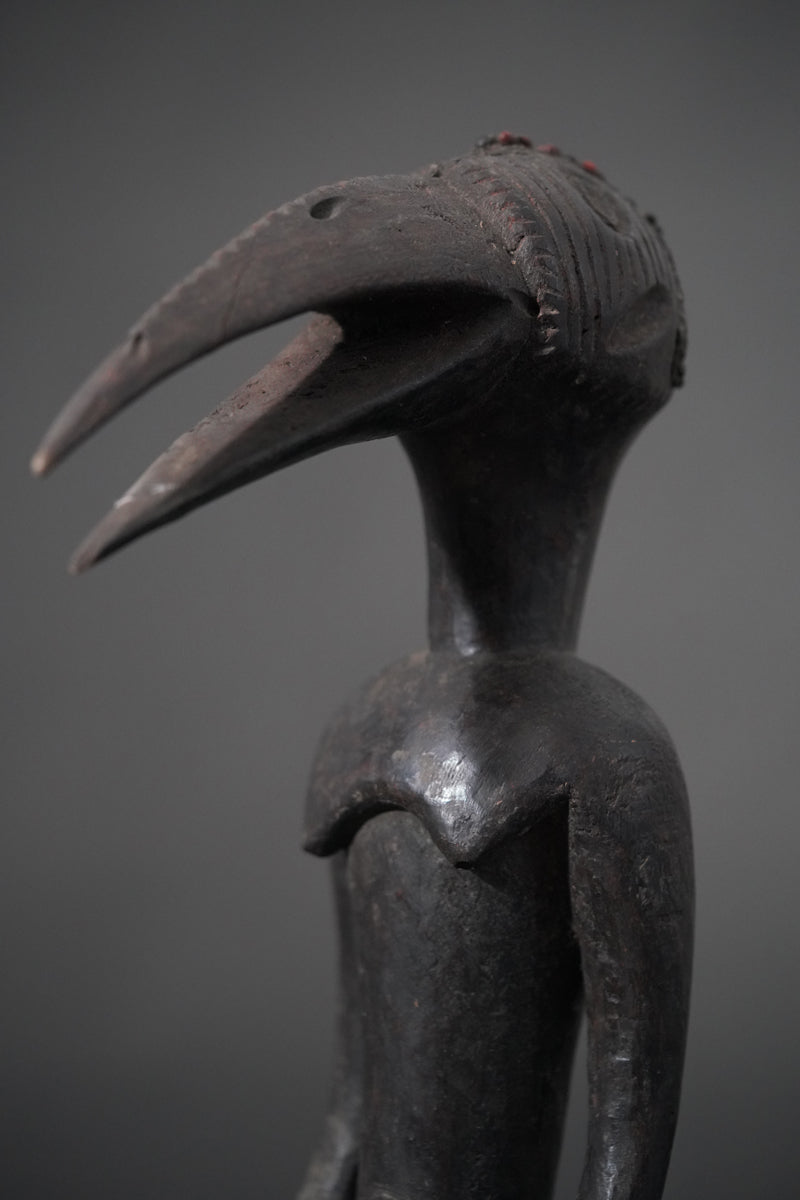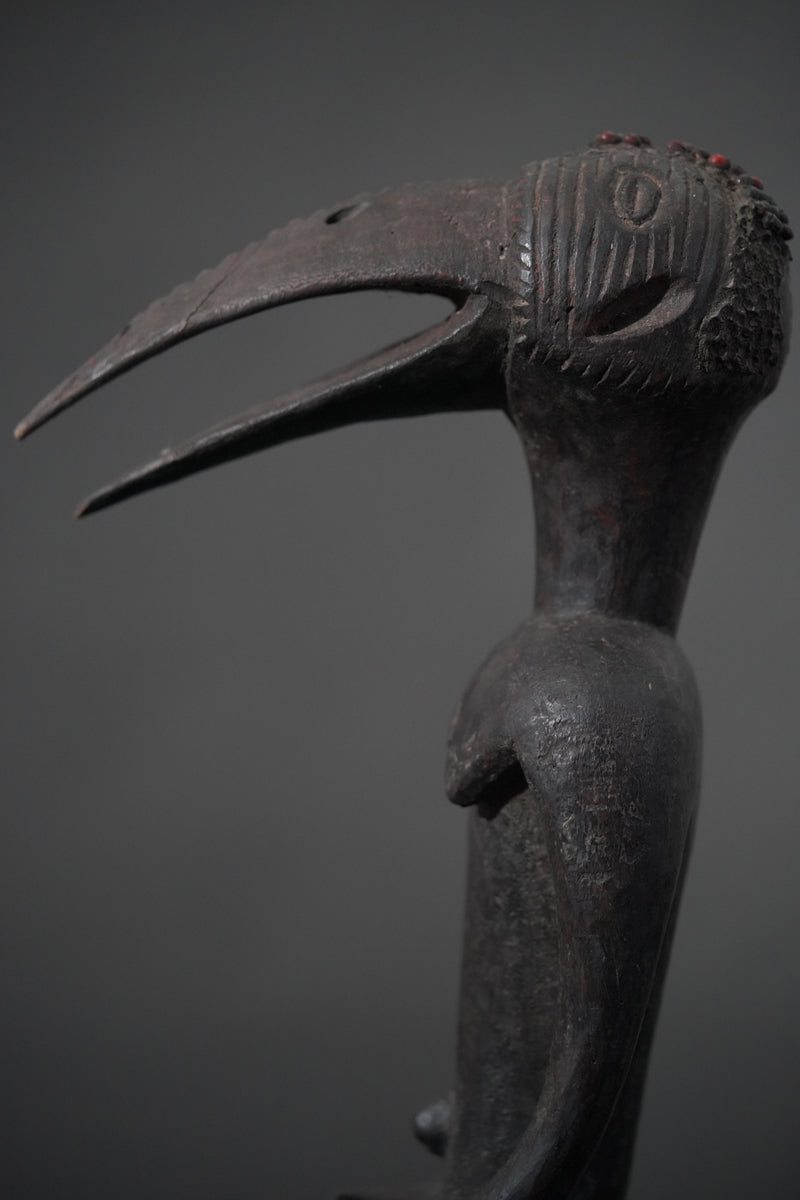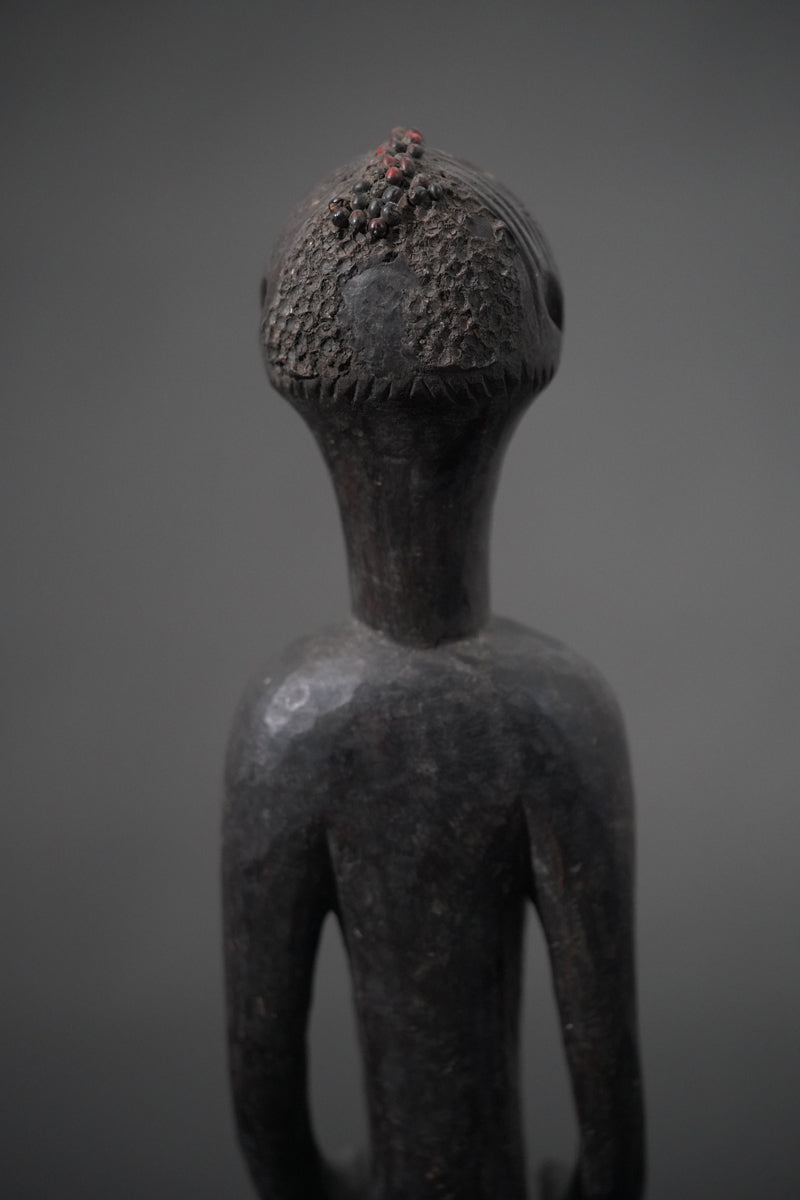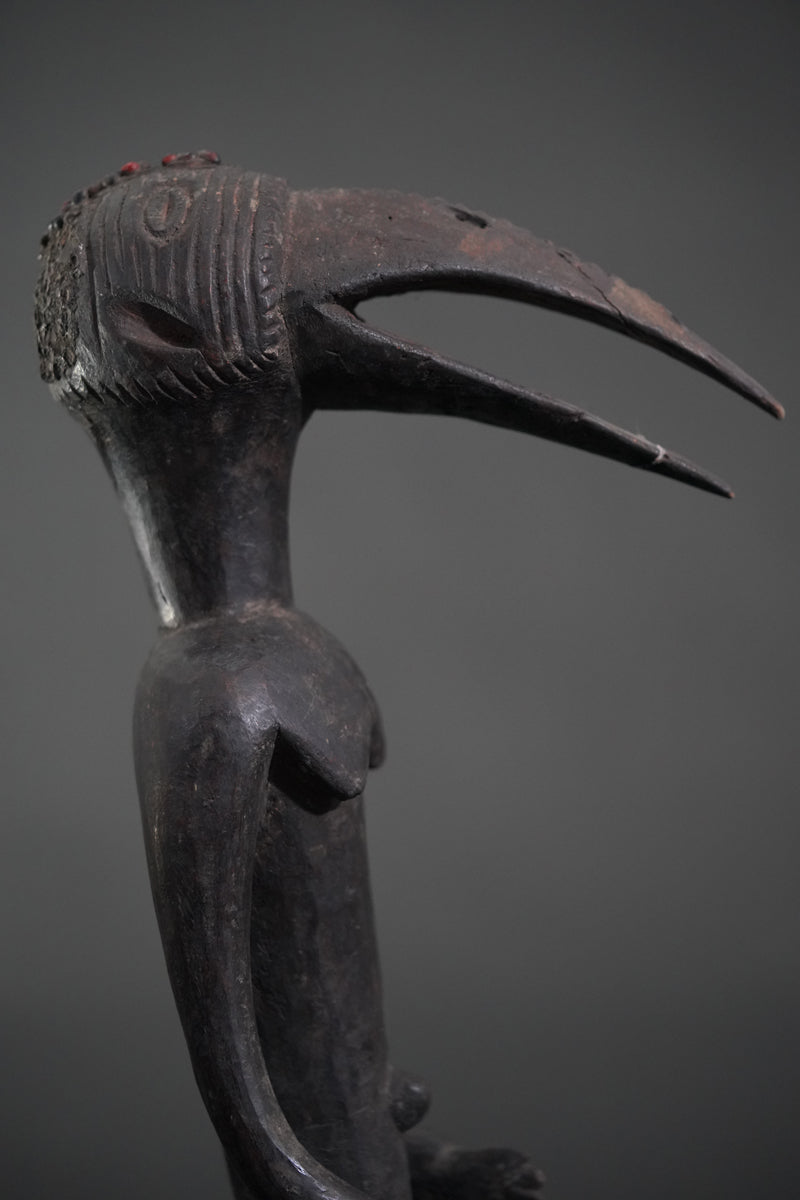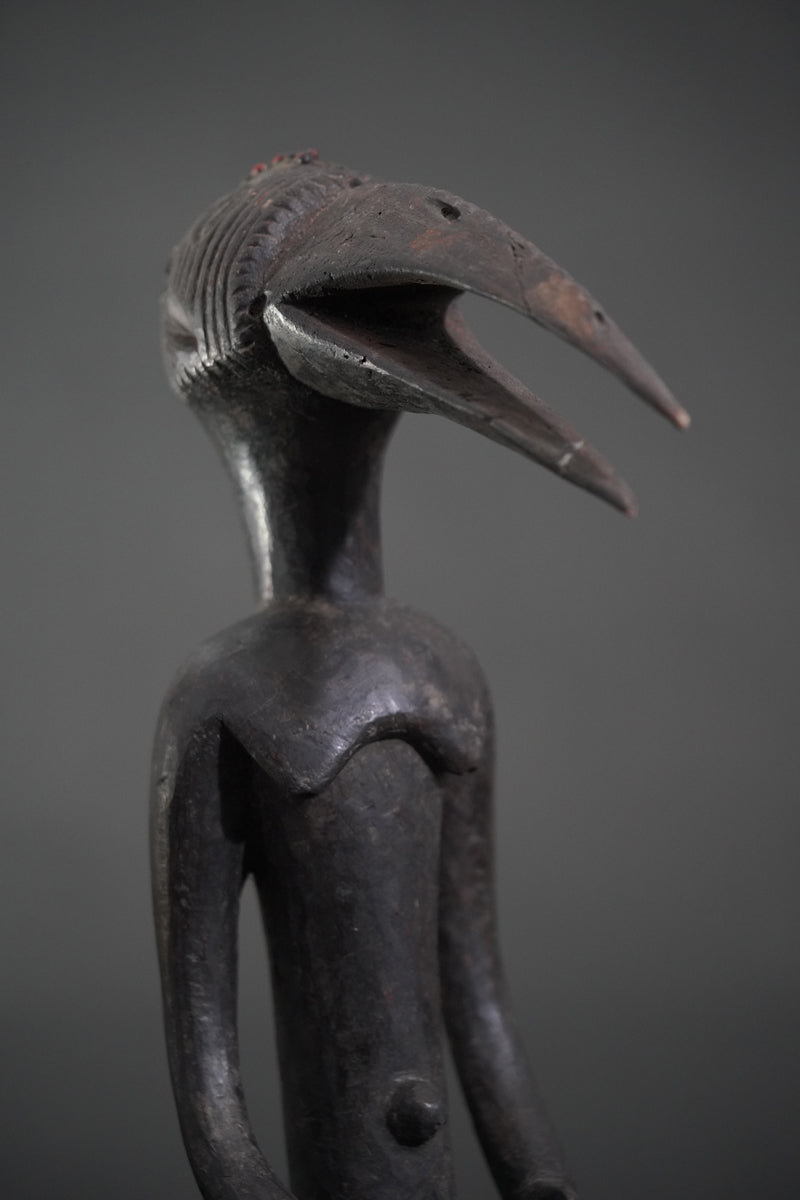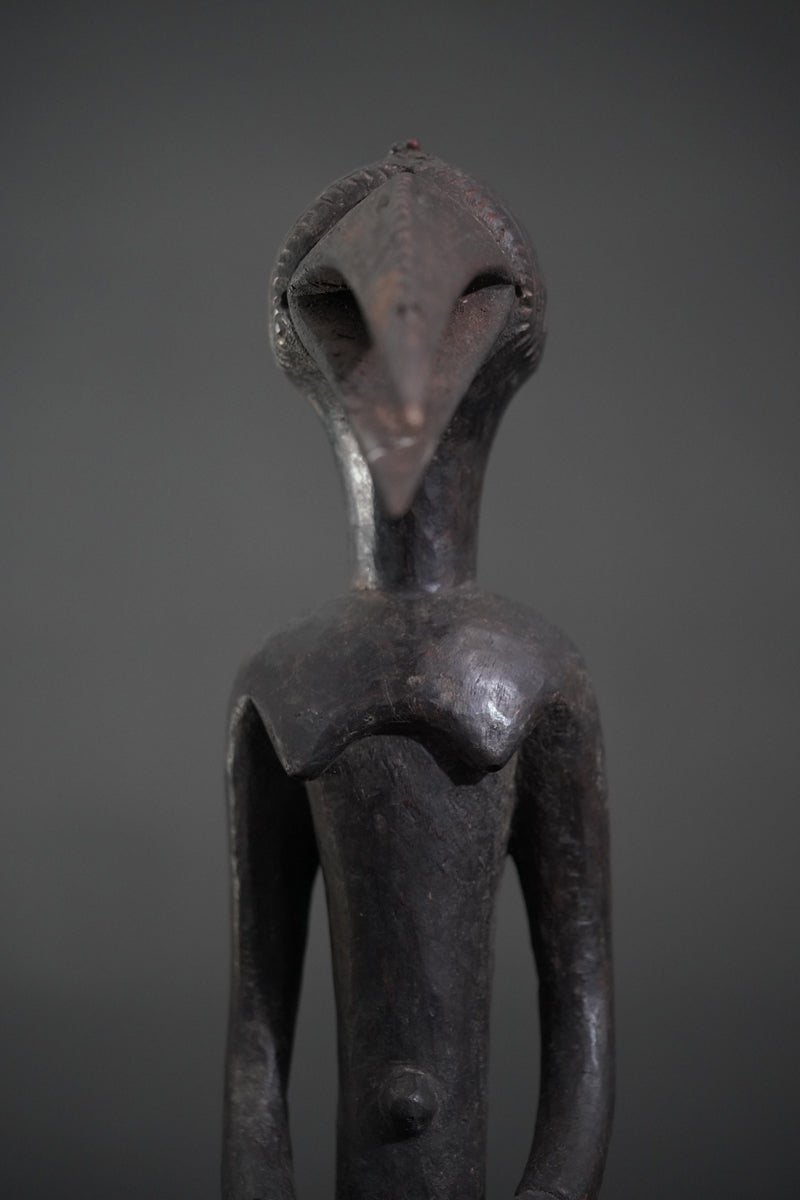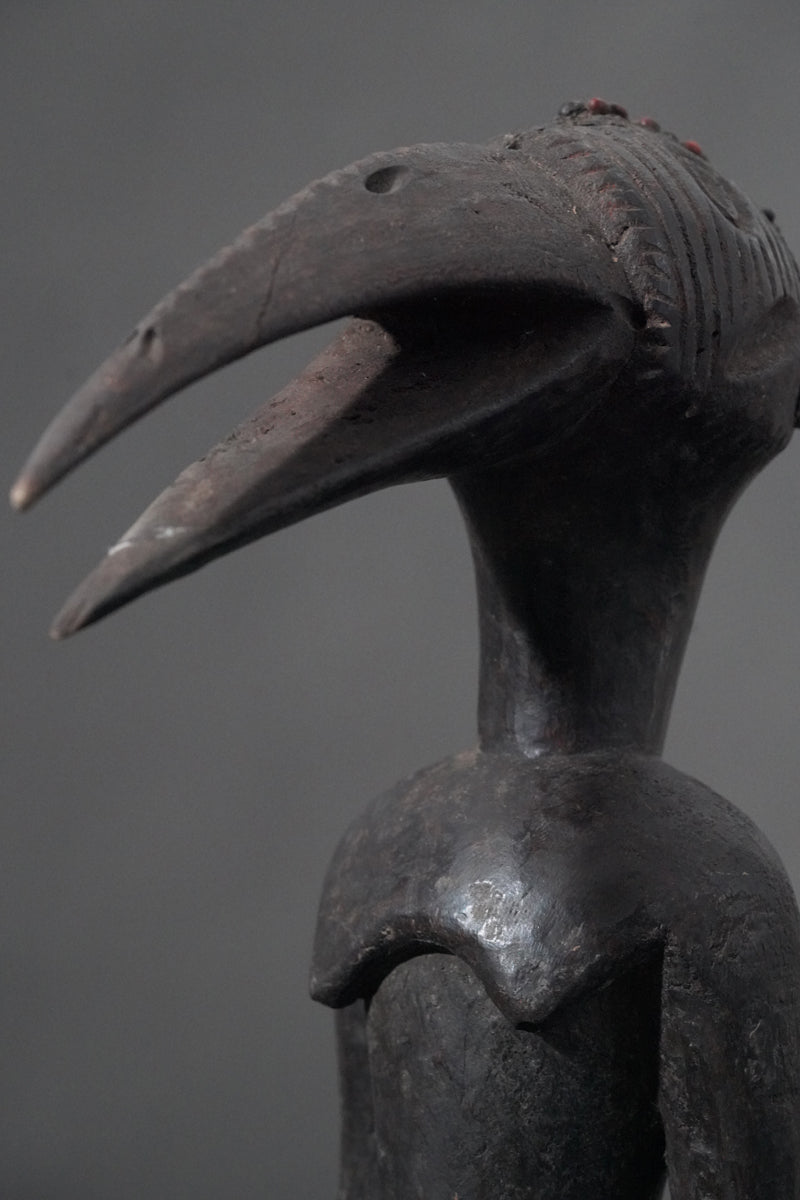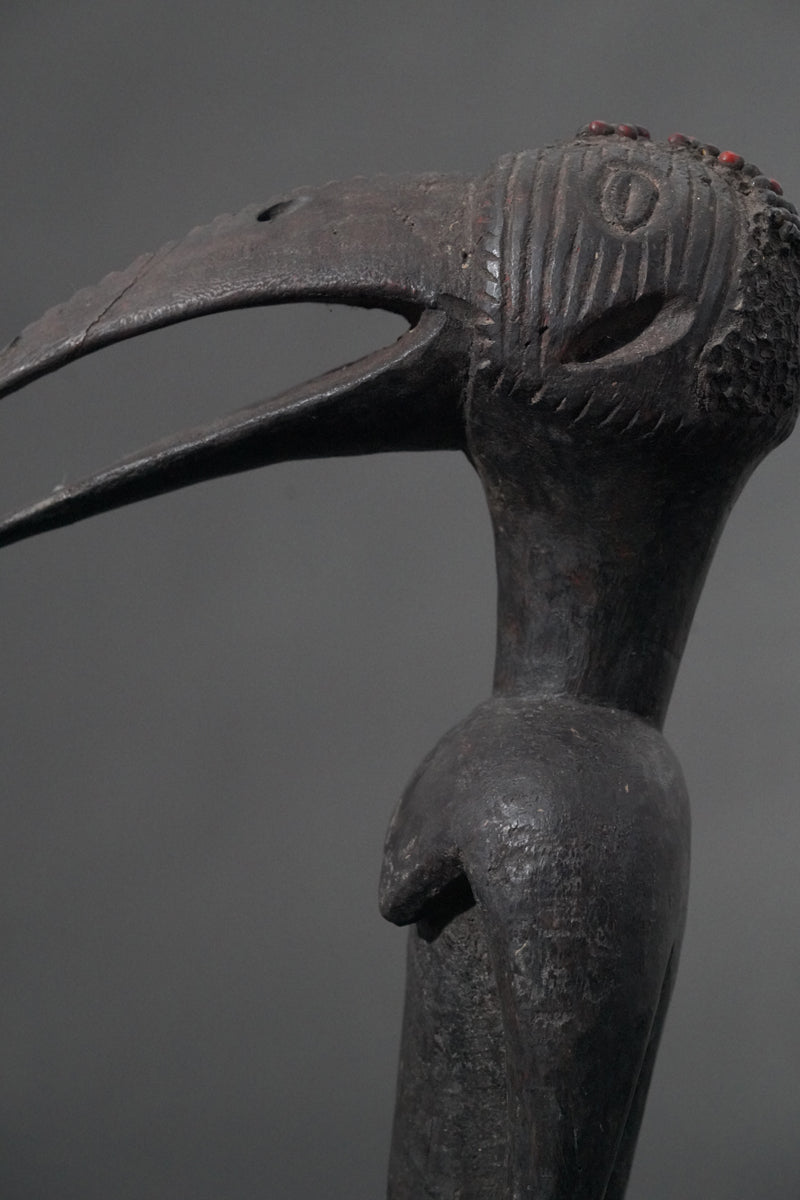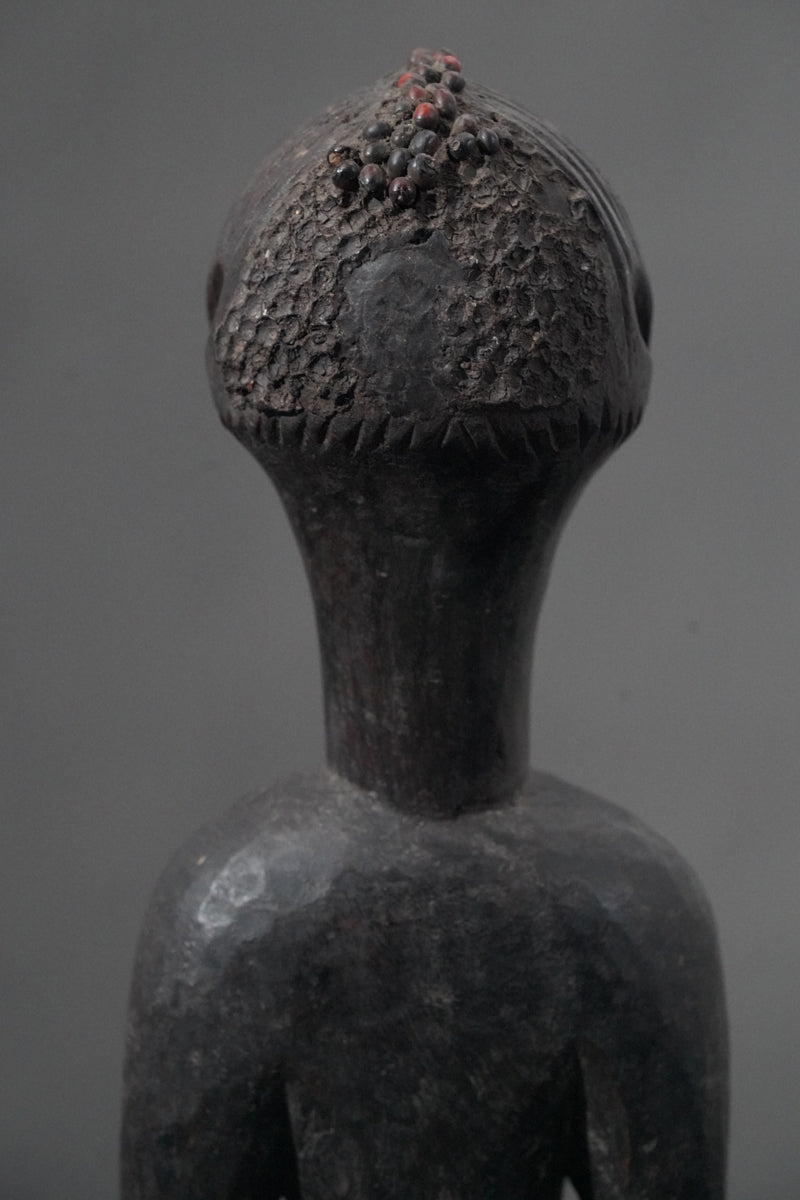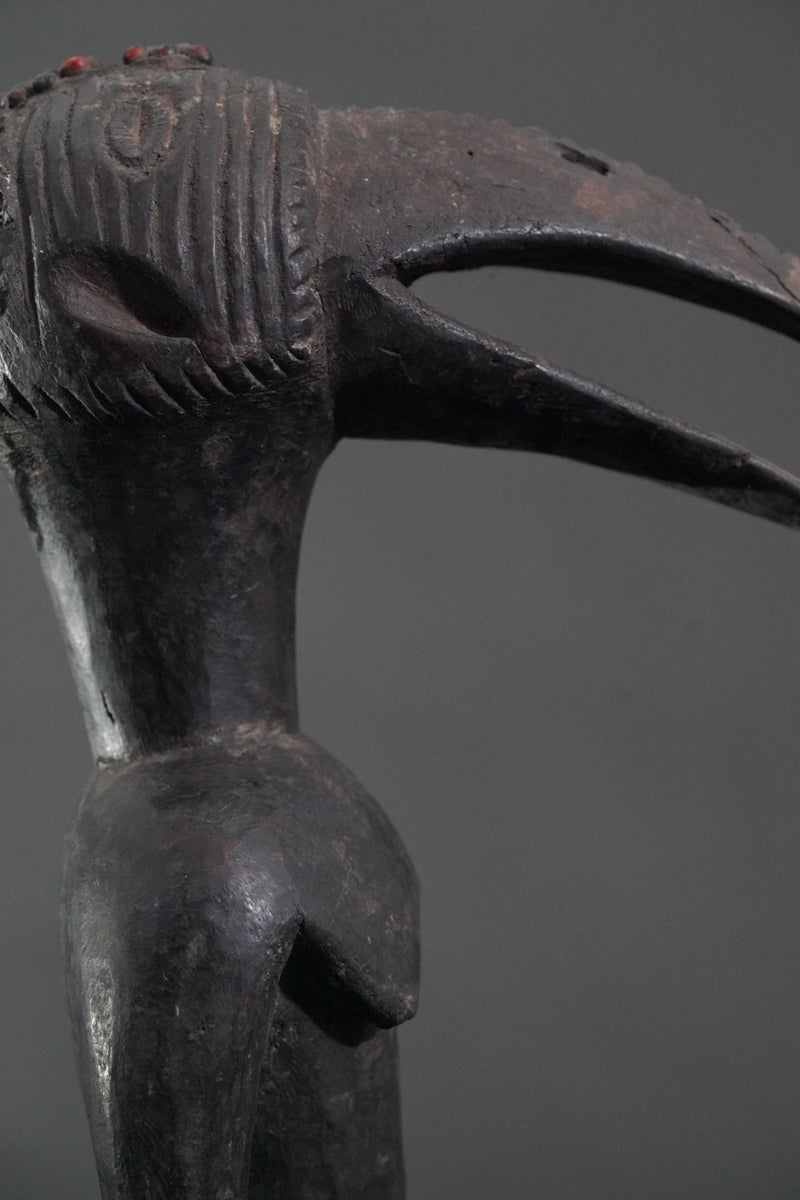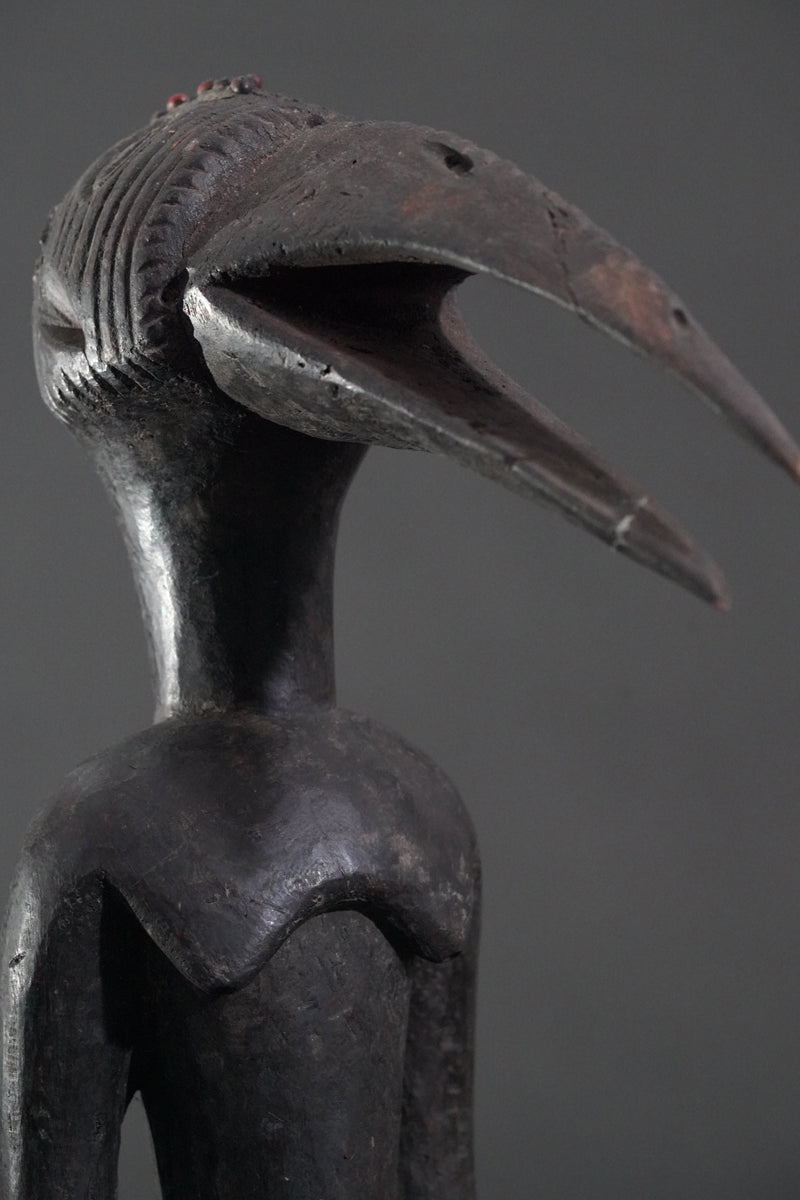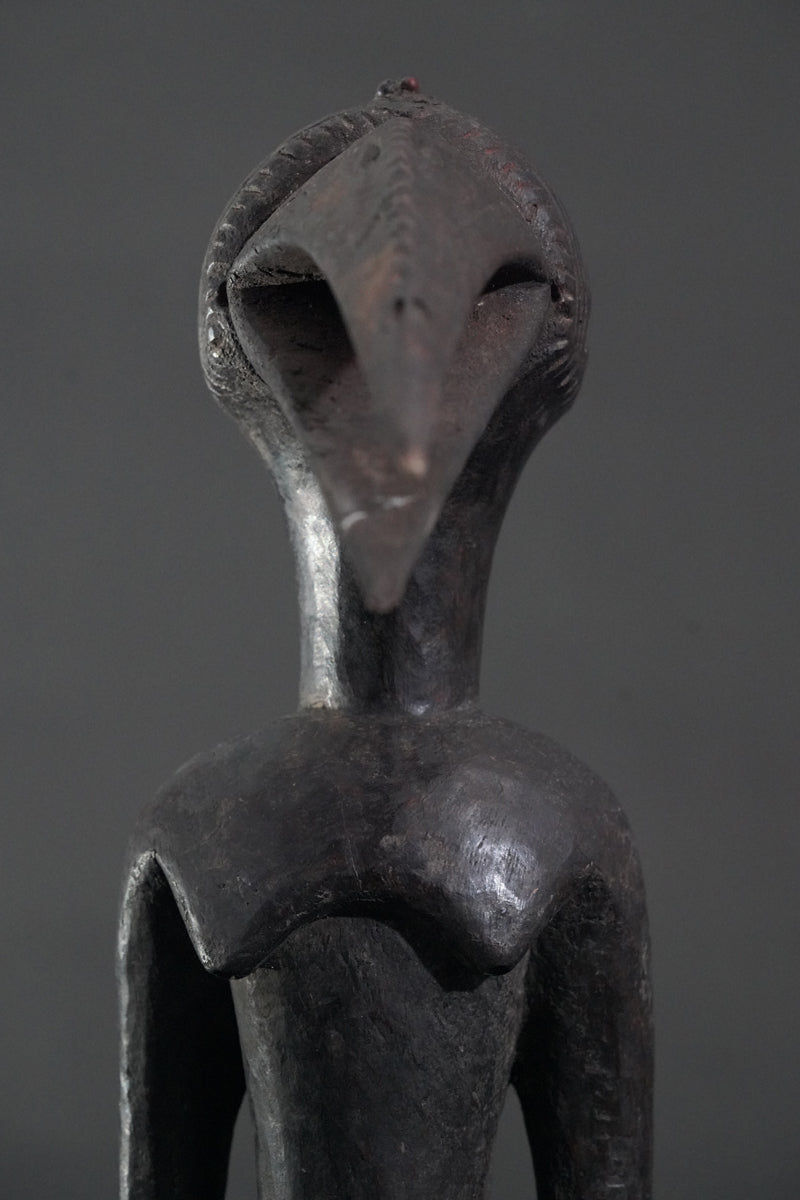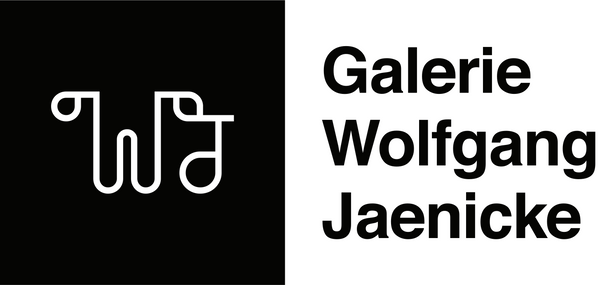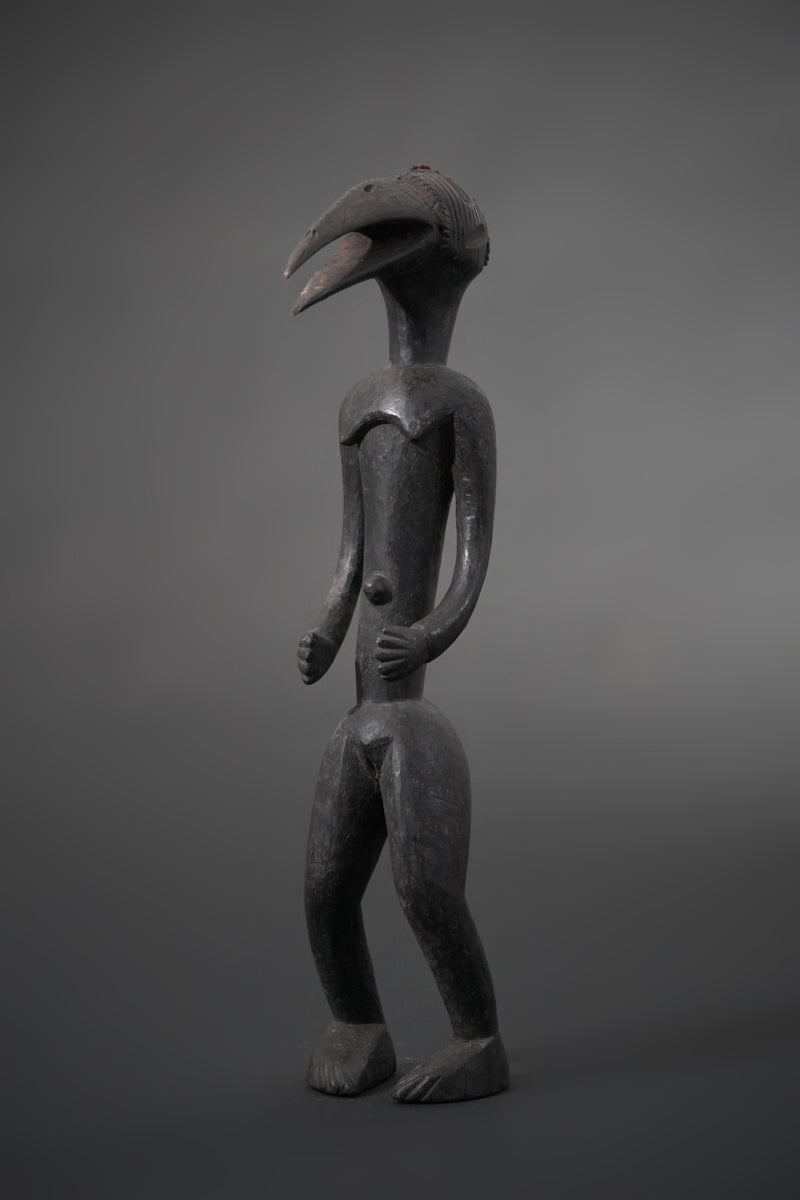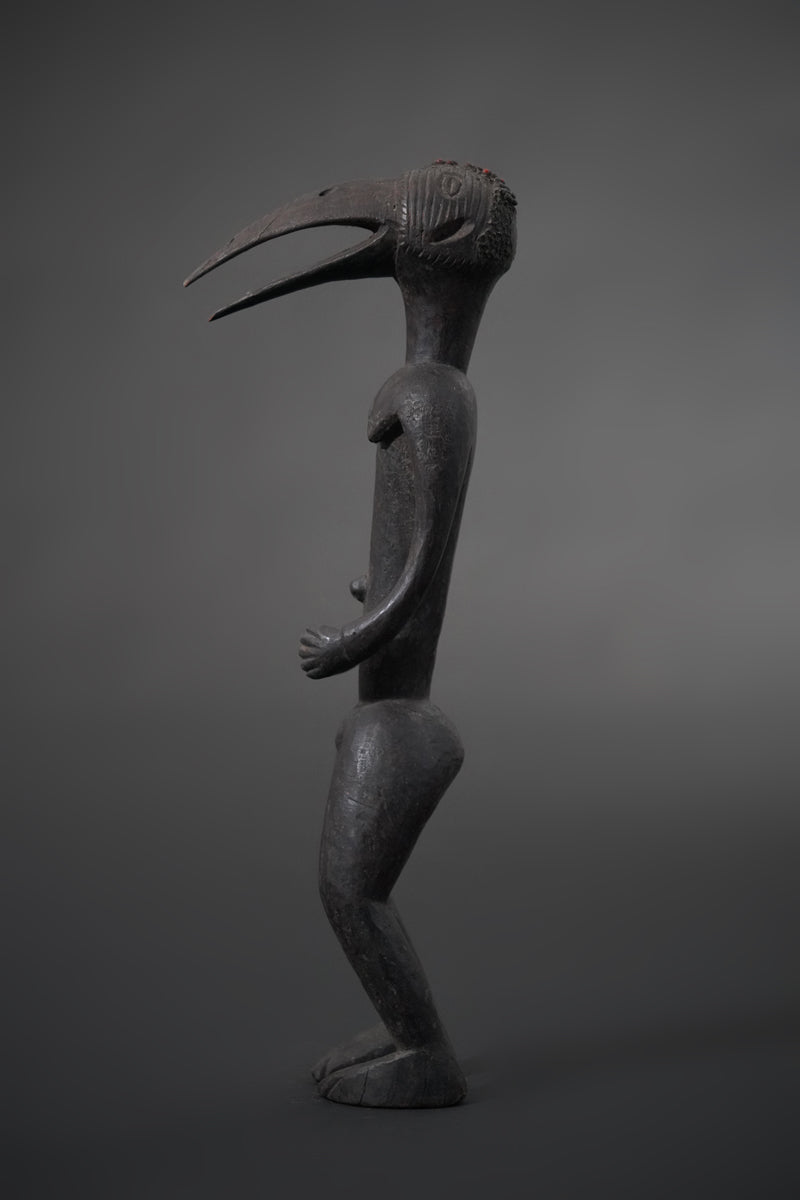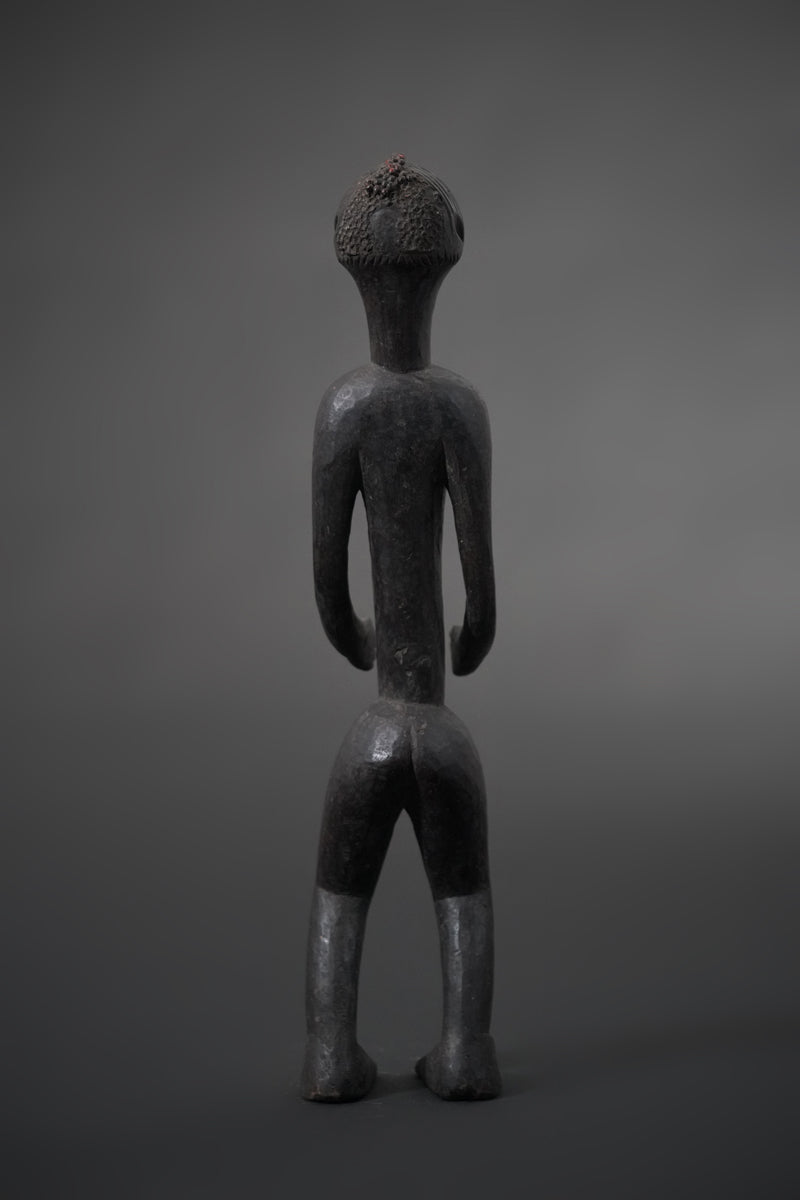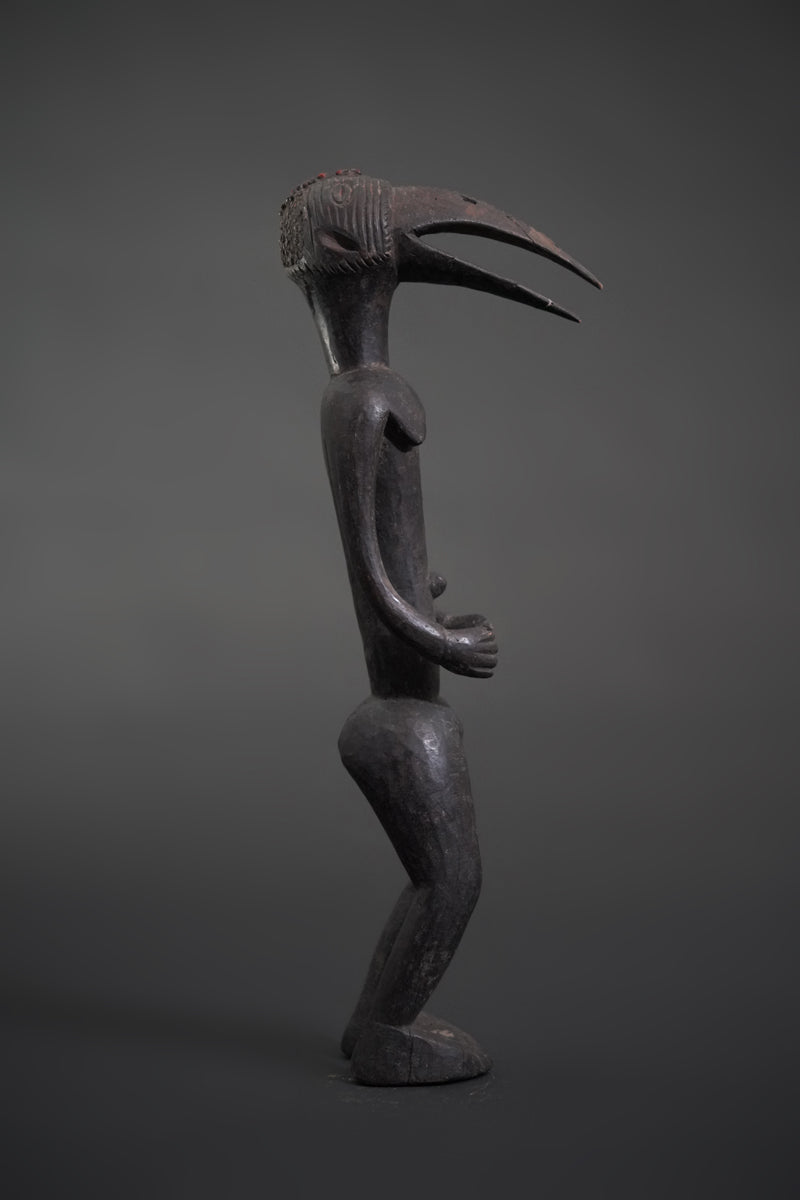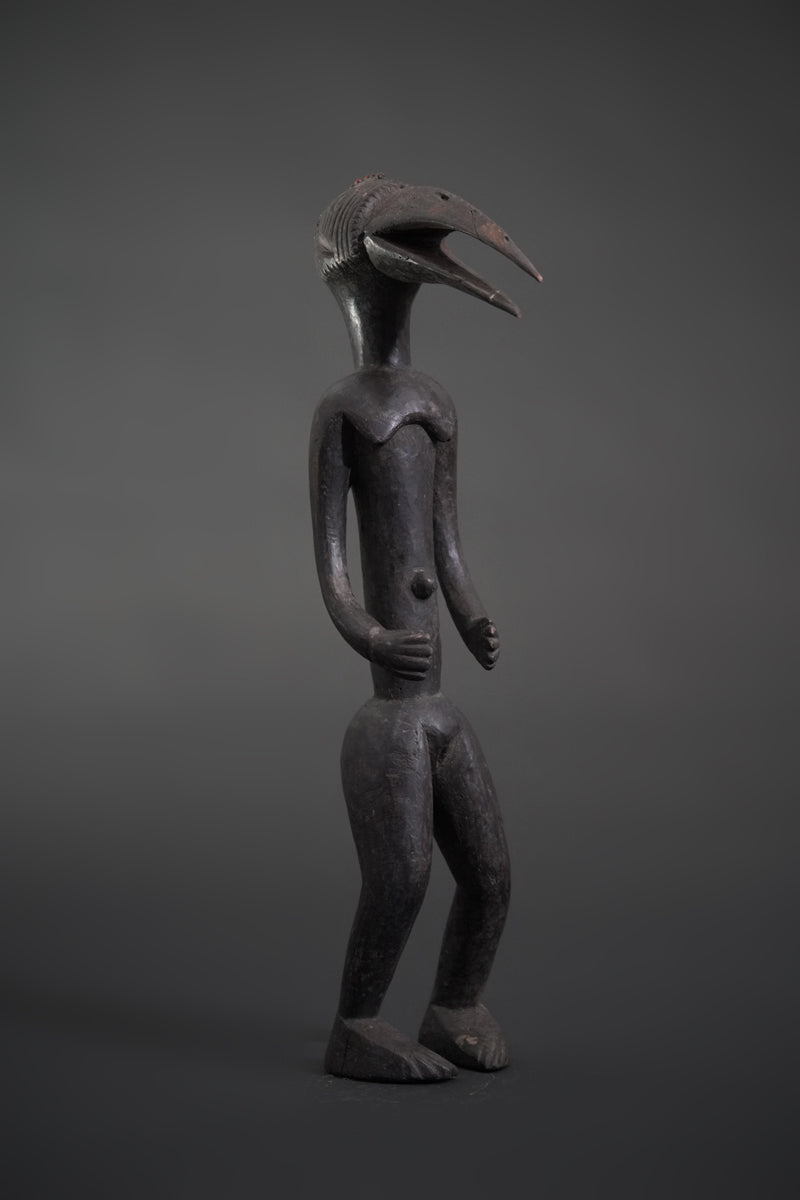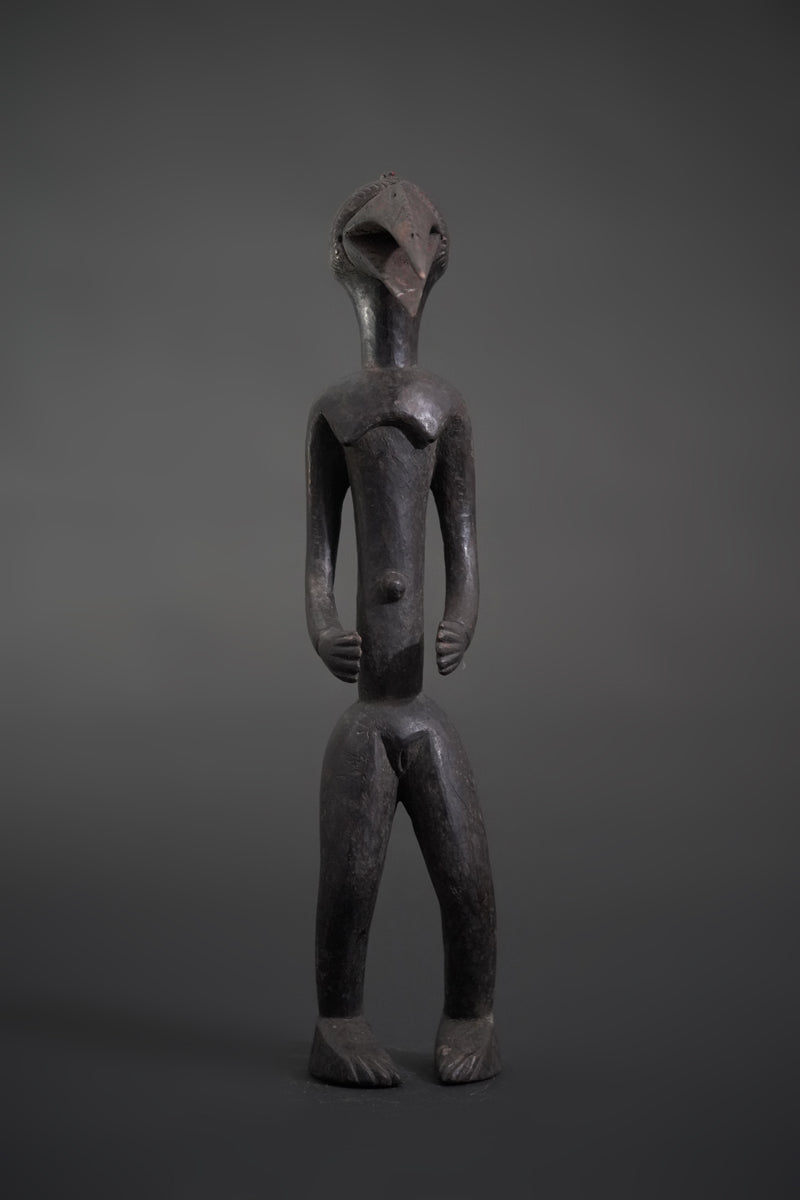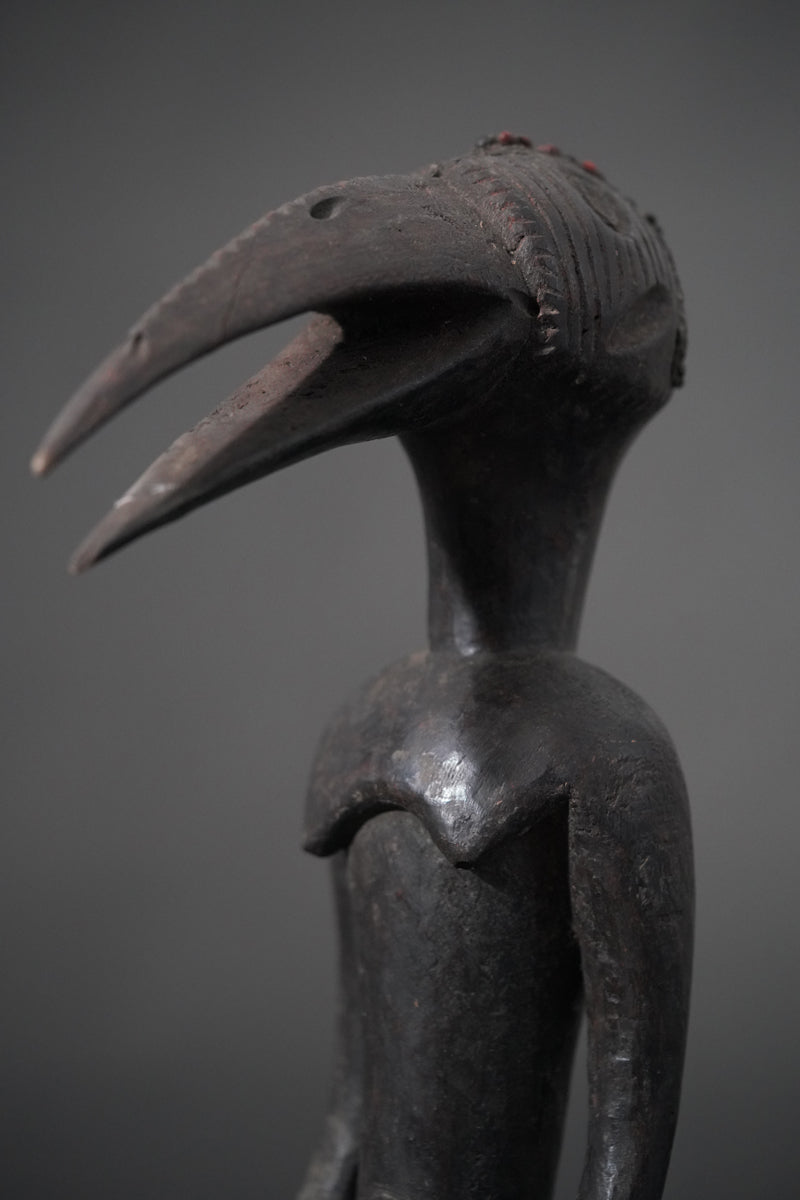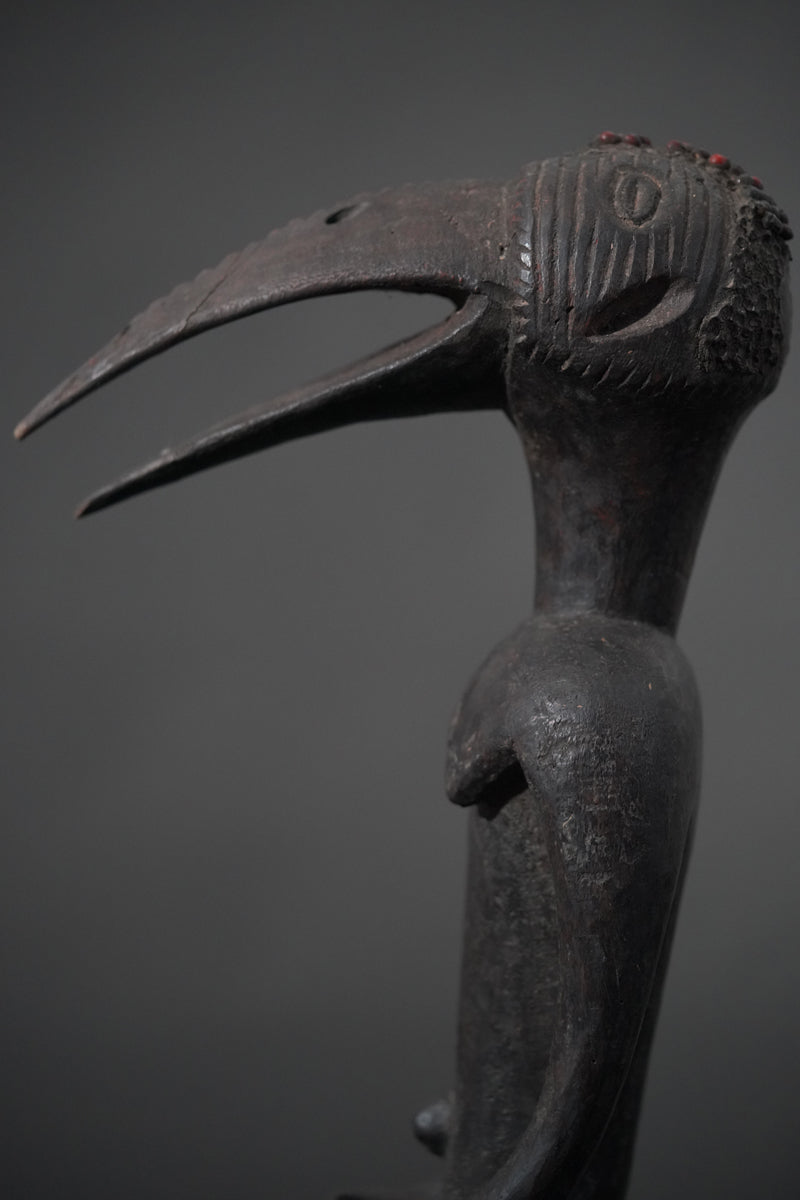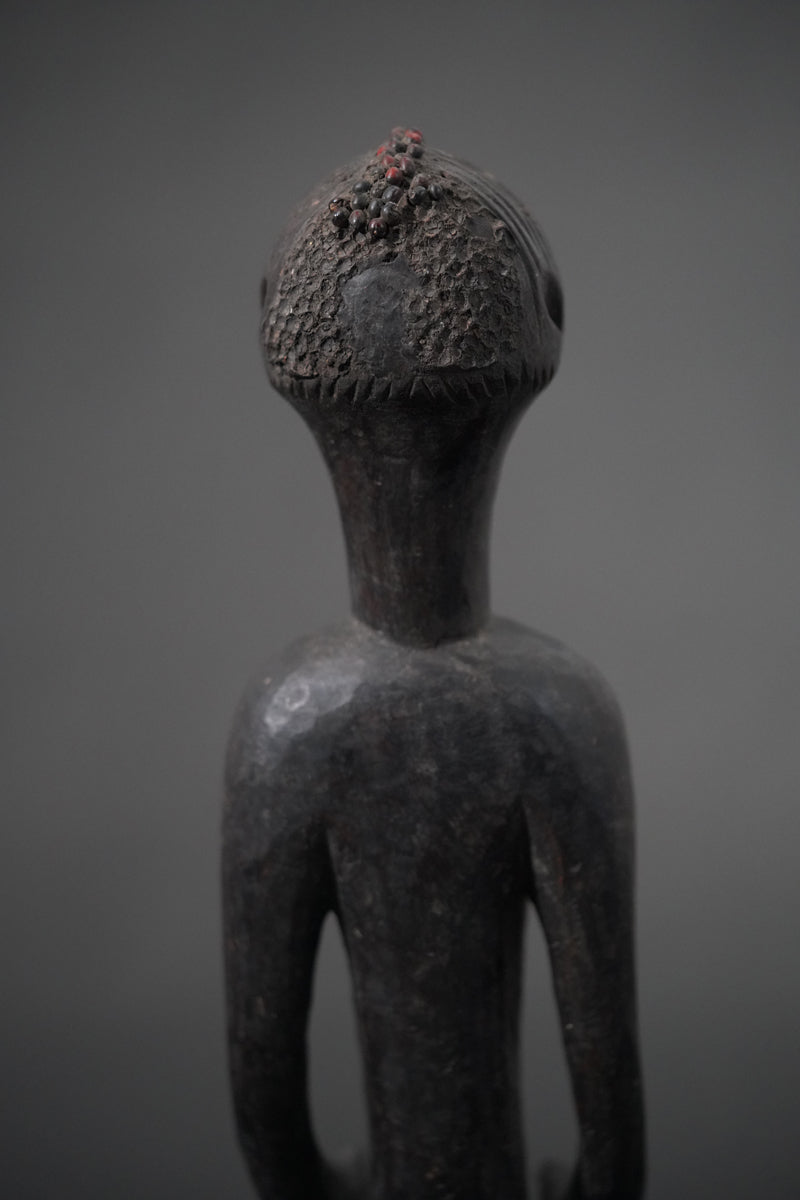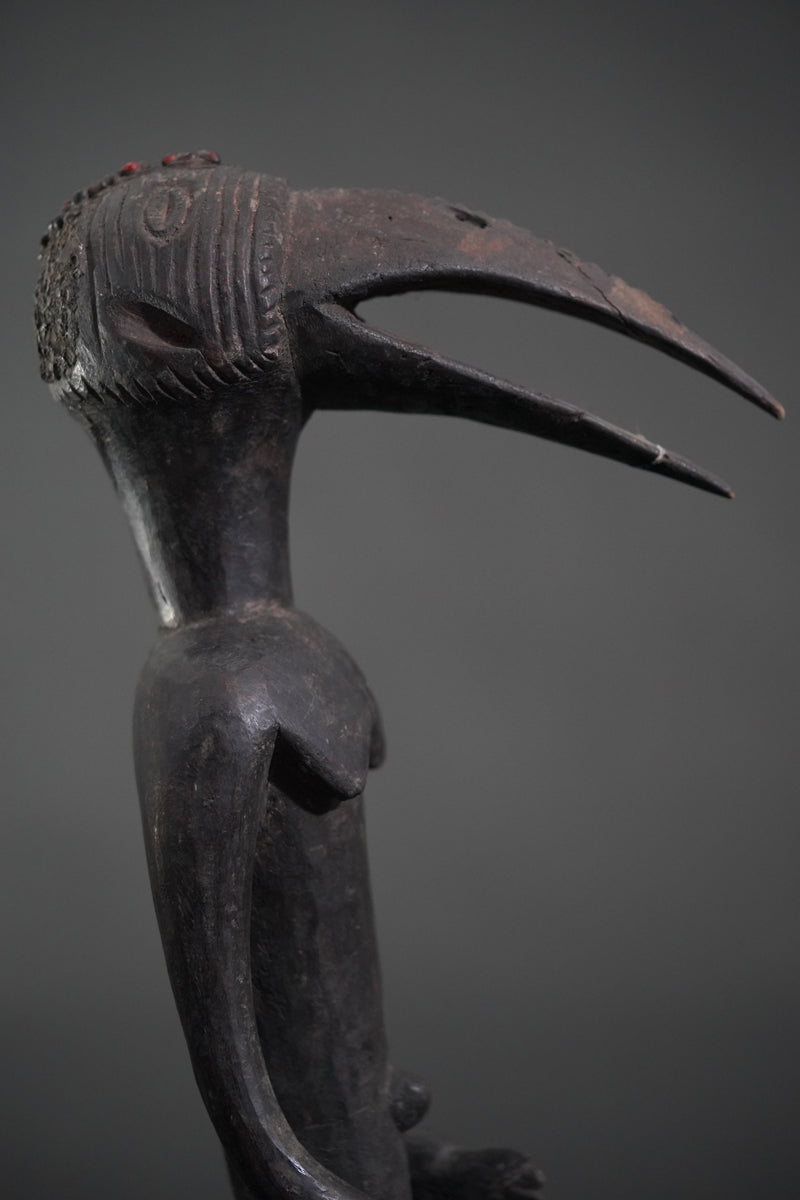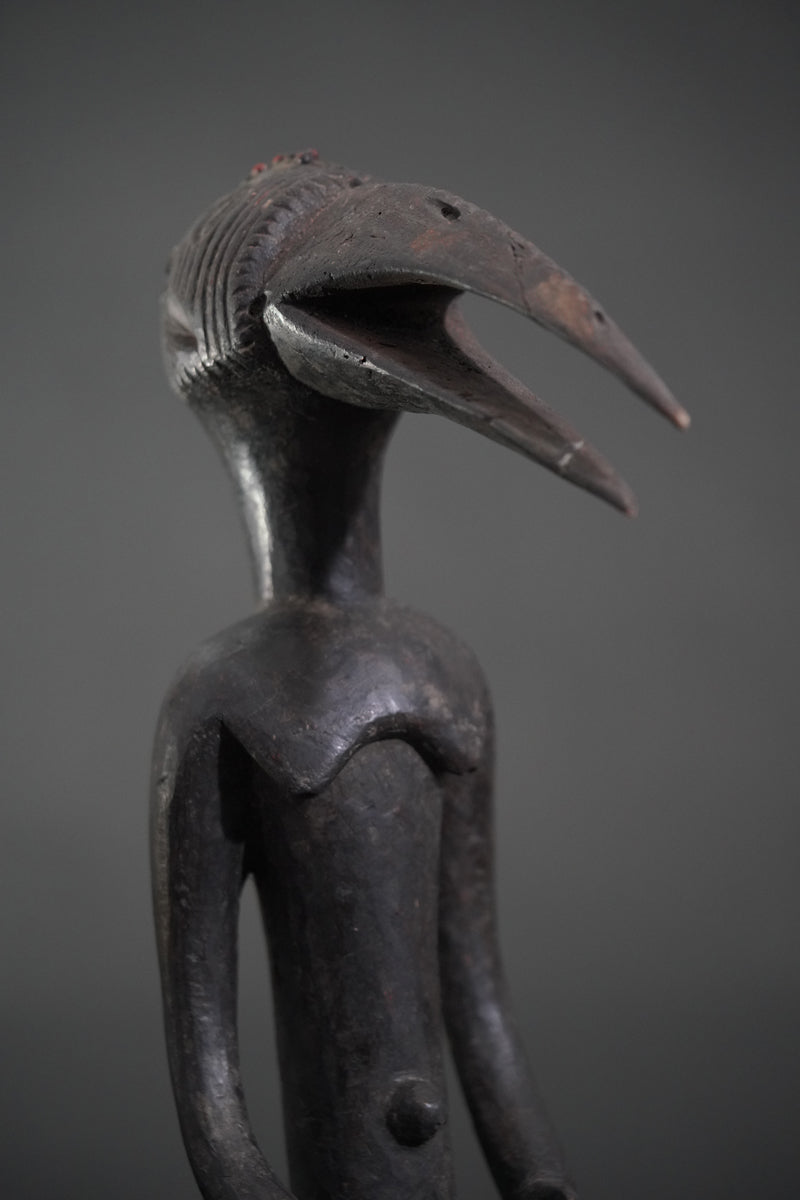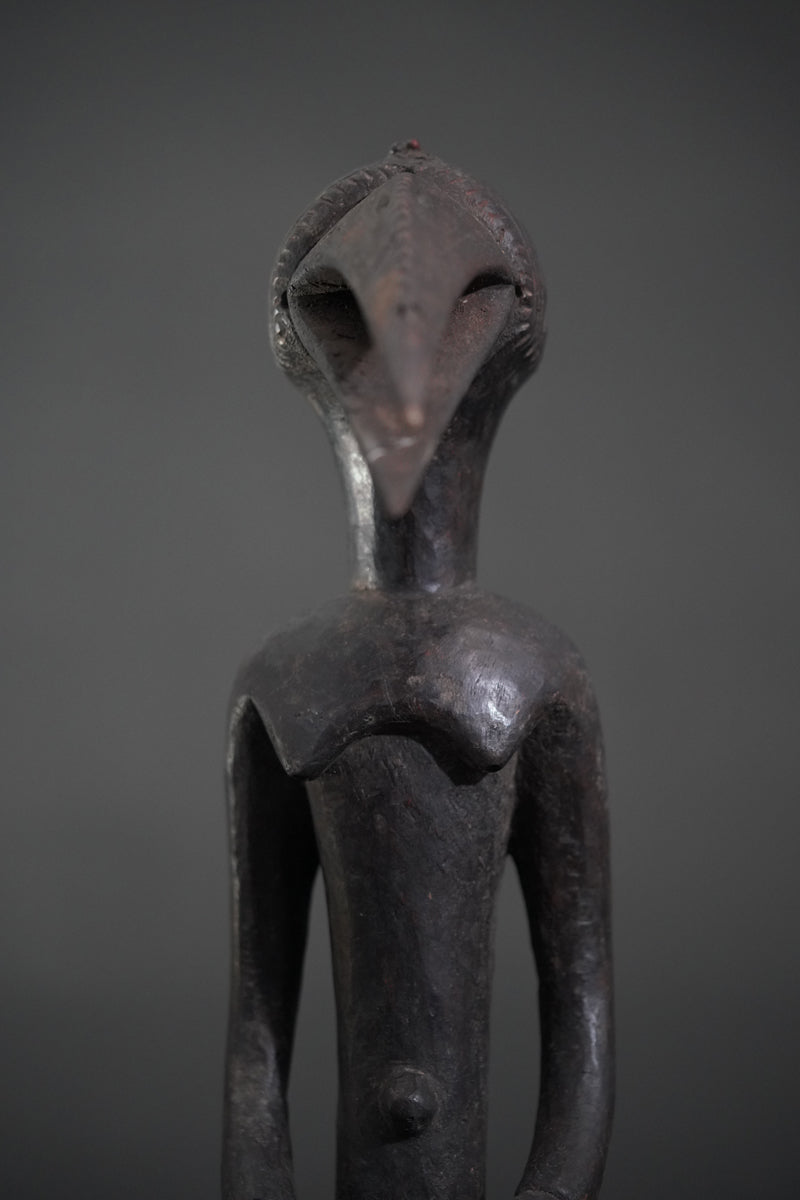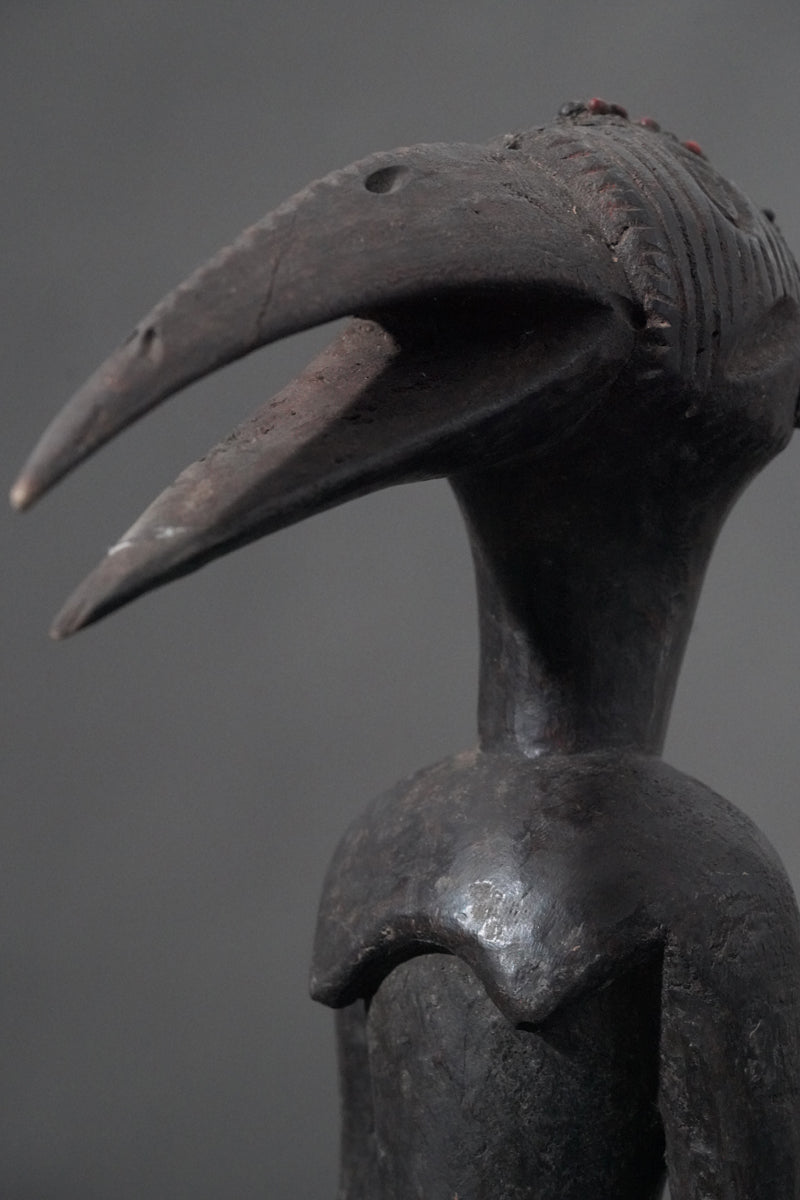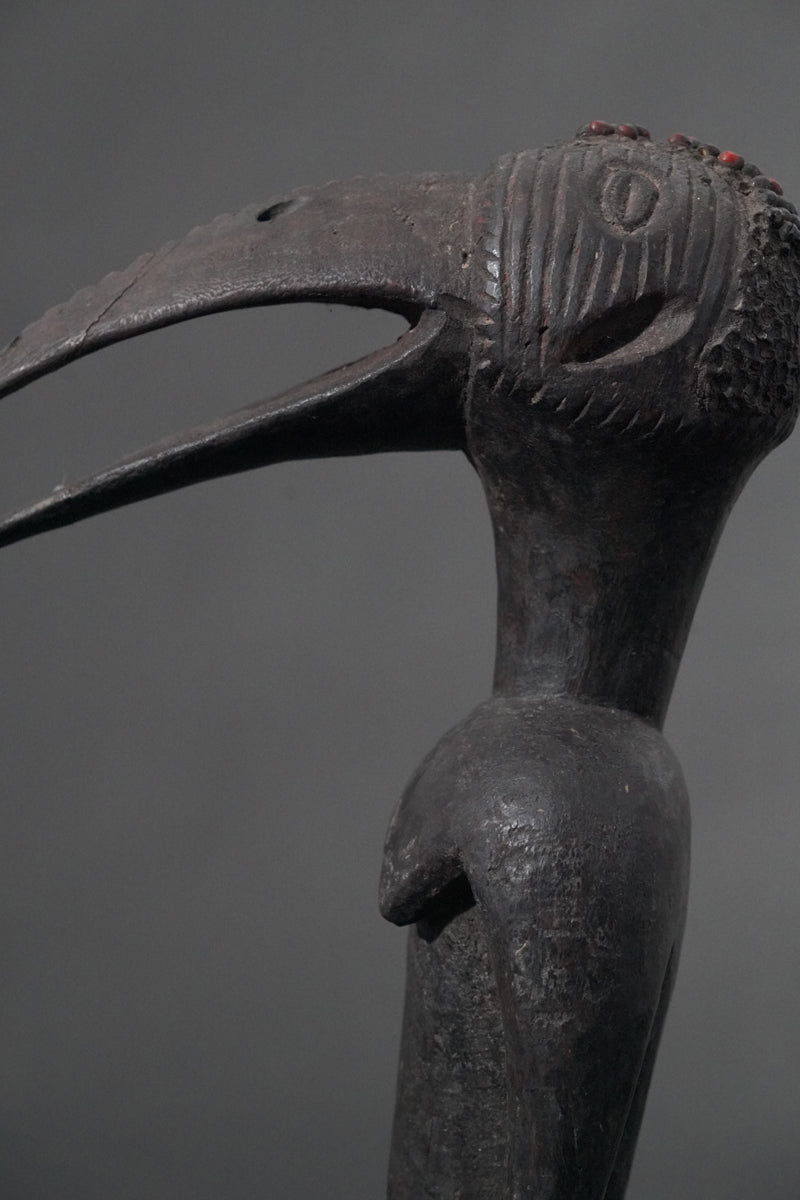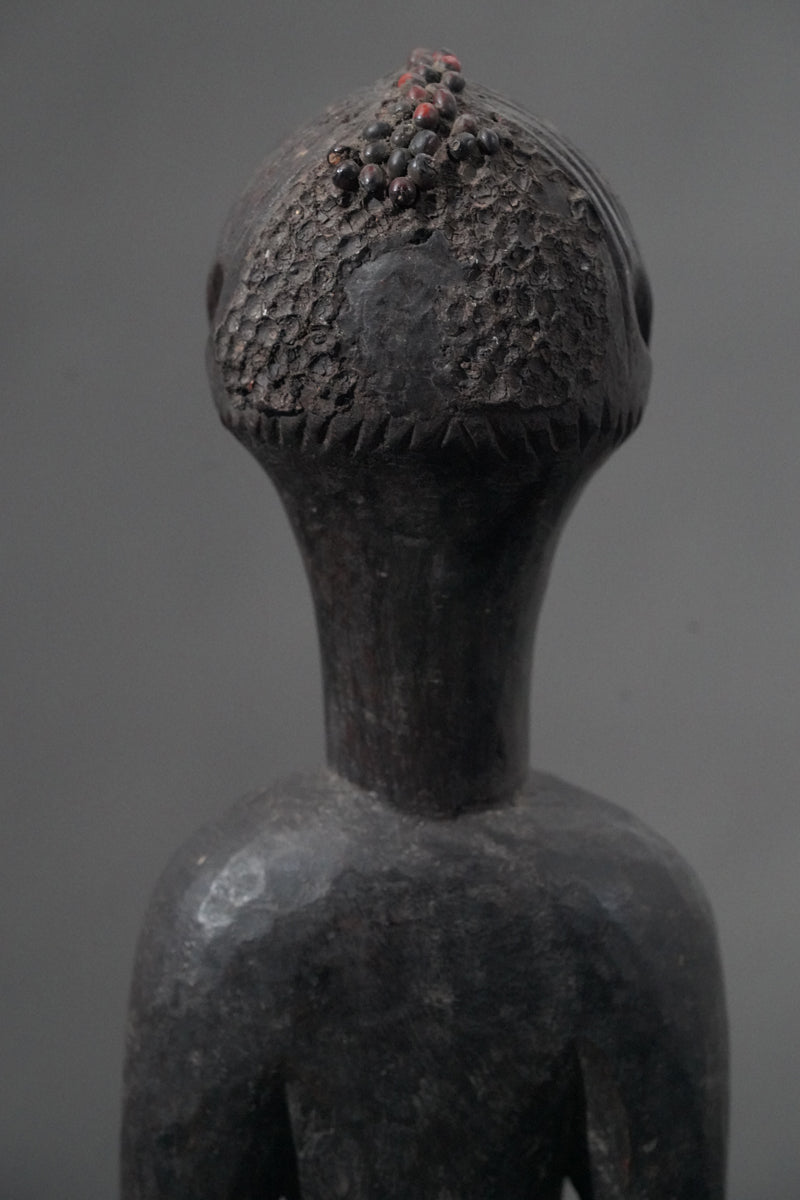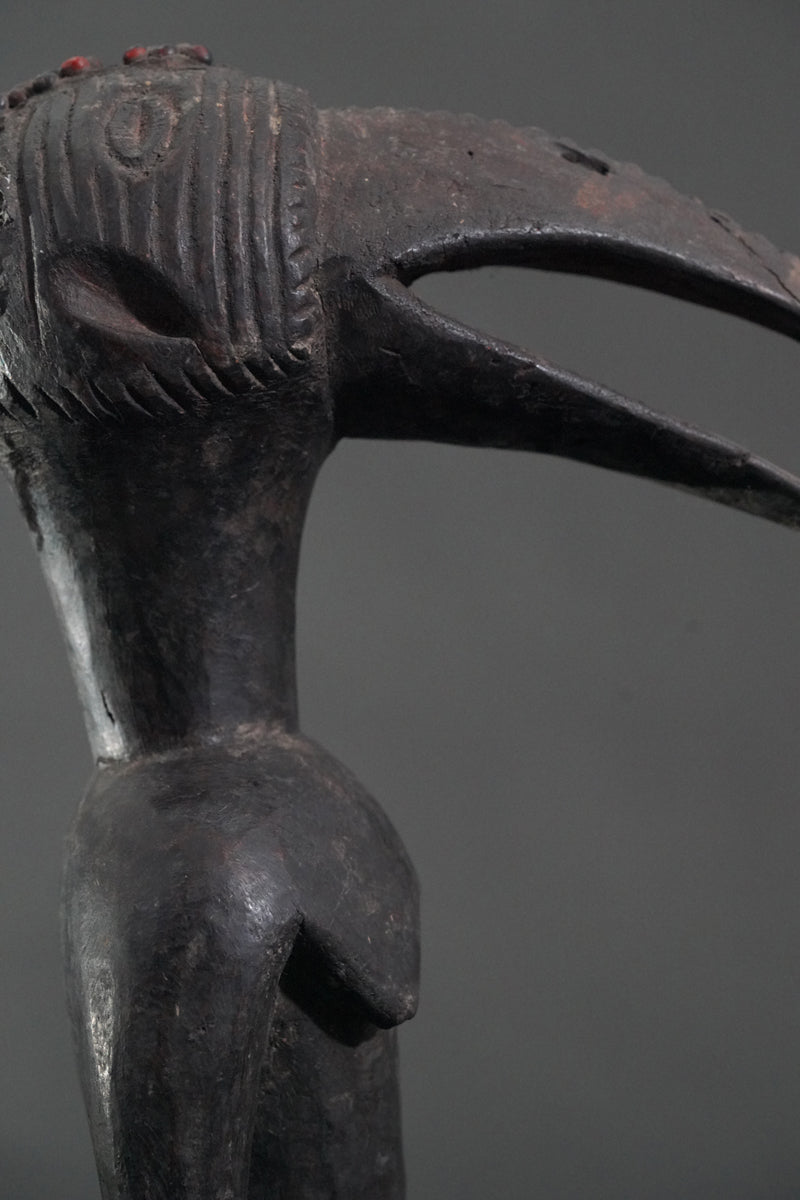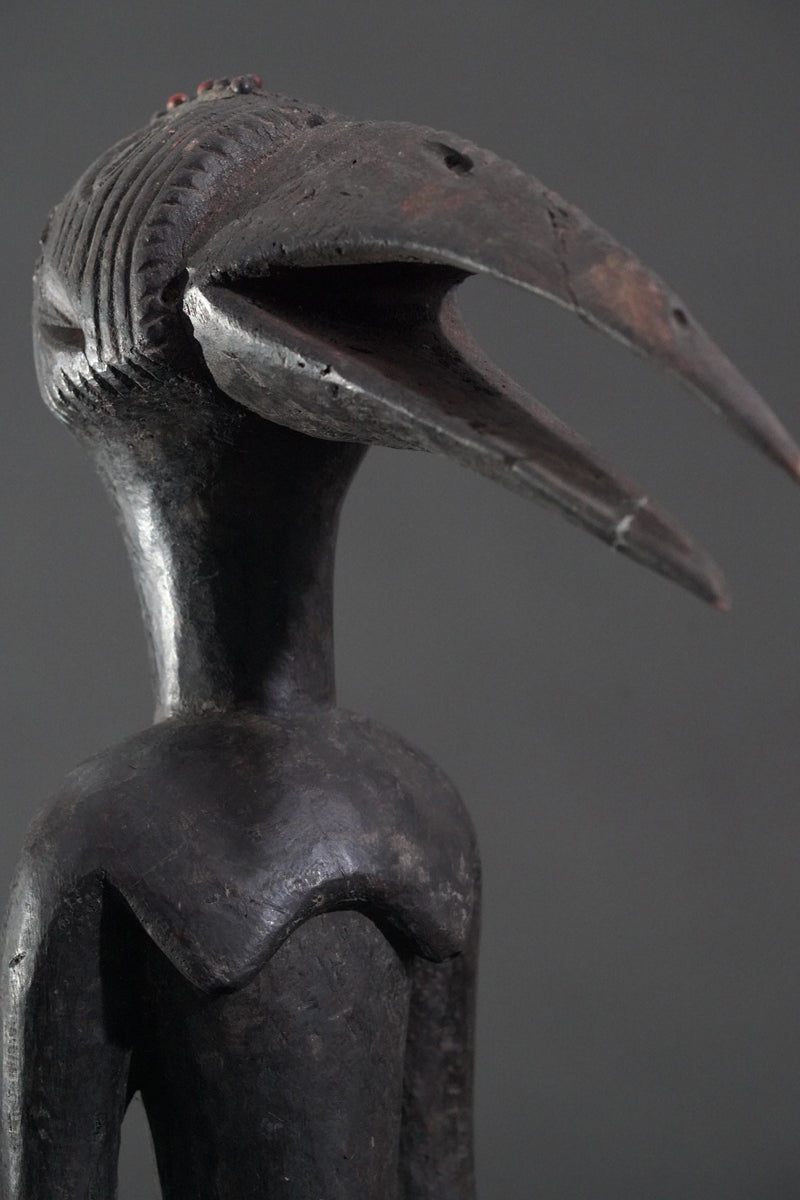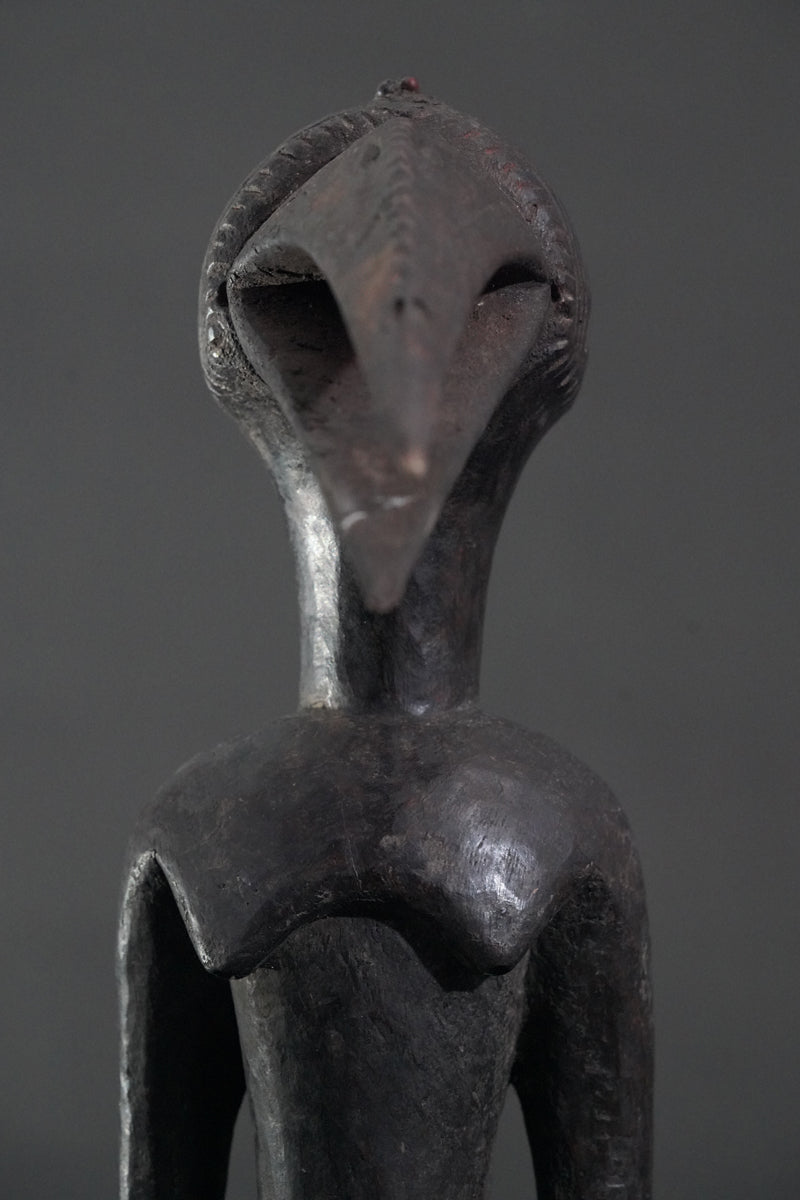wolfgang-jaenicke
An anthropomorphic female Chamba sculpture
An anthropomorphic female Chamba sculpture
Couldn't load pickup availability
An anthropomorphic female Chamba sculpture, Northern Nigeria, standing on inwardly turned feet and slightly bent legs, a funnel-shaped torso with a protruding navel, flat small and pendulous breasts, curved arms, the head decorated with the red seeds of fruit and dominated by an oversized bird's beak; the lower tip of the beak broken off and repaired, nearly black wood, partly shiny.
The Chamba live in eastern Nigeria and in Cameroon -adjacent to the Dakka and Mumuye- and are estimated to have only about 20,000 members. The Chamba tribe is divided into small kingdoms and has extensive initiation rites. Their figures and masks show a preference for heavy abstraction and can be very strong in character and impressive in their execution.
"Similar to their Mumuye and Jukun neighbours, the Chamba venerate anthropomorphic statues of the male and female gender. As Fardon (in Berns, Fardon and Kasfir 2011: 231) explains, figural "sculptures were highly versatile instruments in the Middle Benue. They might stand in particular for ancestors, or for a collectivity of the dead (ranging from those of a specific kin grouping to the dead generally), or for dangerous spirits that were taken to be human-like in appearance. In different contexts, the same anthropomorphic figure might evoke some or all of these types of being, and it might do so differently for participants, for onlookers, and for those excluded except by hearsay, who enjoyed more or less insight into what was taking place. To make the same point negatively, nothing we know about Middle Benue figures suggests that their unmodified formal properties especially suited them to one type of ritual use rather than another." And he continues (ibid.: 233): "Aside from occasional, slight differences in size, Middle Benue male and female sculptures are similar, differentiated by features of the head (particularly coiffure, earrings, or headgear, which are treated as secondary gendered characteristics)" Source: Myron Kunin Collection of African Art.
Lit.: K.-F. Schädler: Encyclopedia of African Art and Culture, Munich 2009; Jean-Baptiste Bacquart: The Tribal Arts of Africa' by Jean-Baptiste Bacquart, 2002.
700 - 900,- Euro
Height: 63 cm
Weight: 1,5 kg
